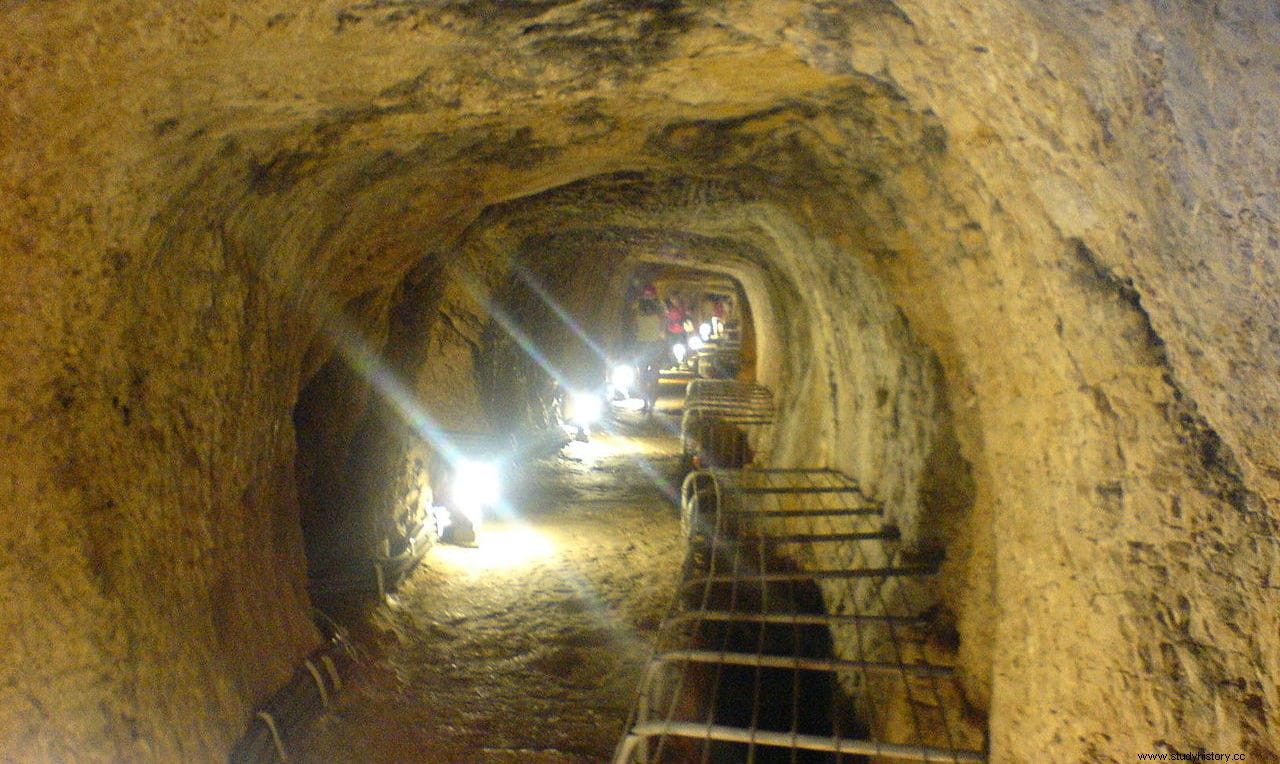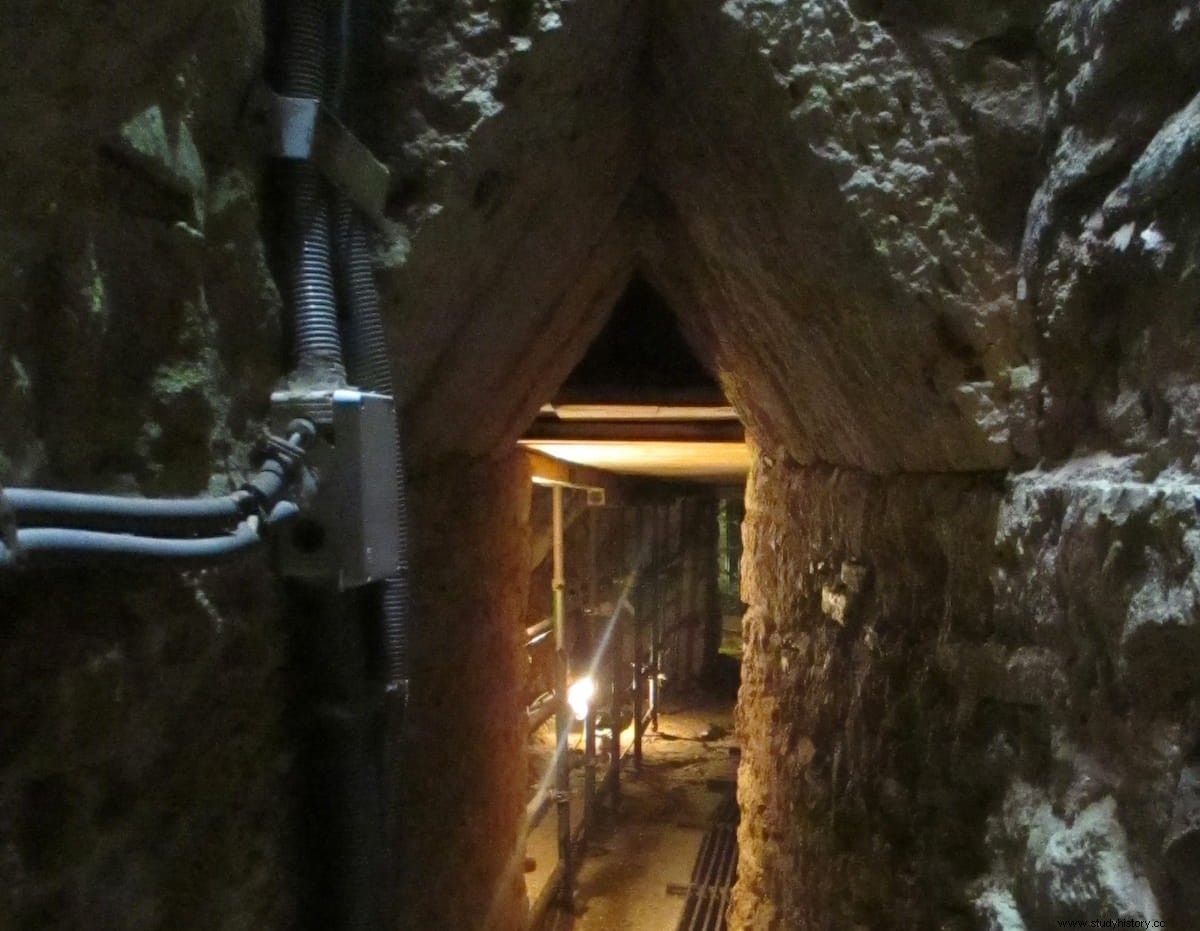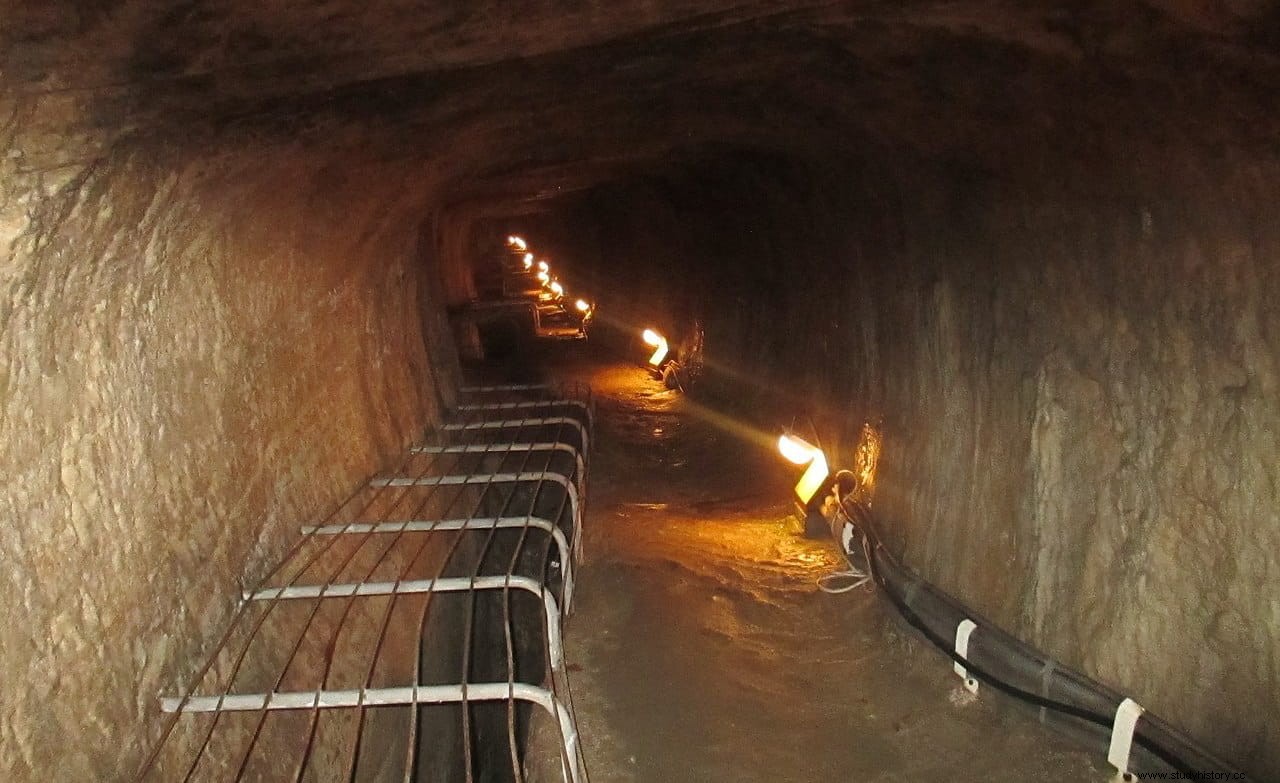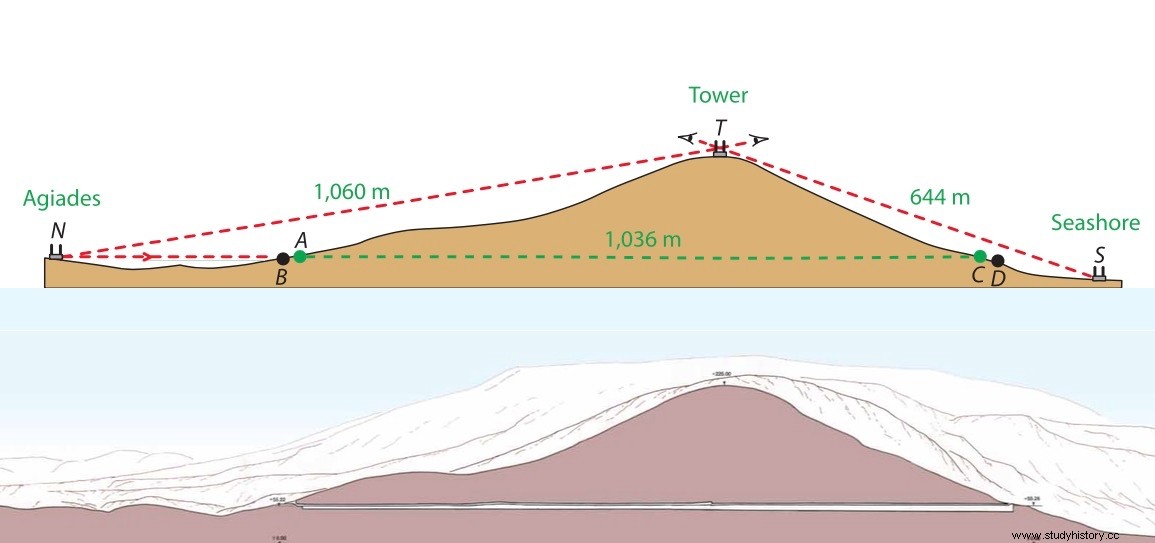After three years of restoration and the installation of a lighting system, the Eupalino aqueduct tunnel, one of the jewels of ancient engineering, reopens to the public on the Greek island of Samos.
Samos was, in the middle of the sixth century B.C. a prosperous city that had built a high reputation in the Hellenic world for its cultural achievements. Under the rule of the tyrant Polycrates it became the most powerful city-state in the Aegean.
At that time, between 538 and 522 B.C. the most outstanding and lavish constructions on the island were built:the temple of Hera, the palace later reused by Caligula, and the tunnel-aqueduct of Eupalino.
The trade and navigation, as well as the military power of Samos, ensured its wealth. But something was missing, to ensure the supply of drinking water to the city. That is why Polycrates commissioned the engineer Eupalino de Megara, who would also be in charge of the expansion of the port and other works, the construction of a tunnel that would connect the Agiade spring on the other side of Mount Ampelos (or Kastro) with the Pythagorean (name given today to the archaeological site of the ancient city and port of Samos).
The spring was located at the western end of the mountain, so the tunnel had to go through the mountain from one side to the other to reach the city walls.

The canalization had to be underground, because Polícrates feared that his enemies could surrender the city by cutting off the water supply if it was carried out on the surface. That way, and by keeping his entrance into the mountain hidden from him, he made sure to at least make things difficult for them.
The tunnel, whose construction is estimated to have lasted between 8 and 10 years, is 1,036 meters long and is considered the second known in history to have been excavated starting from both ends. The first, which we already talked about in a previous article, was Hezekiah's Tunnel in Jerusalem, built in 701 BC. and that today can be visited.
However, the Israelites did not follow a methodical approach, which is reflected in the many errors and corrections they had to make in the directionality of the tunnels. Quite the contrary in the case of Eupalino, who was a conscientious and experienced engineer, and found a brilliant solution to make both extremes coincide.

Herodotus, who possibly visited it some 100 years after its completion, states in the History of him :
The method used by Eupalino to match the tunnels from both ends took into account both possible horizontal and vertical deviations, and is certainly brilliant. It has been speculated about the possible participation of Pythagoras, a native of Samos, and that at that time he must still reside in the city, but there is no evidence in this regard.
Eupalino first calculated the possible meeting point of the two excavations, ordering the workers to change the direction of both tunnels, one to the left and the other to the right (following the direction of advance, on the map the two towards the same direction). That way, even when they were parallel and a certain distance apart, they would always end up converging at one point.

But there was still the problem of depth, it was possible that one was deeper than the other and they did not cross. For this reason, he modified the height of both in the following way:the north tunnel kept its floor horizontal, while the ceiling progressively increased its height. In the south tunnel it did the opposite, keeping the roof line horizontal while the ground level progressively lowered. In this way both tunnels were increasing their height until the planned meeting.
Curiously, modern investigations showed that this last adjustment would not have been necessary, since there was practically no error in the direction of both tunnels.
The work is divided into three sections:a 900-meter-long canalization that runs from the spring to the north slope of the mountain, the Eupalinos tunnel (1,036 meters) that crosses the mountain some 180 meters below the summit, and another 500-meter pipeline that runs from the tunnel exit to the old city walls.

The entrance to the tunnel in the part of the mountain was hidden by excavating an opening or access 1.90 meters high by 63 centimeters wide in the rock, which gave access to a gallery at the bottom of which several wells and a cistern of the that started the 1.50 meter high tunnel. Every 63 meters there is a vertical sign inscribed with a number and the name of the person responsible for the work in that sector.
At the bottom of the tunnel there was a canal made of terracotta that reached the south exit, and from there the pipes started up to the city walls. From there, the conduction was divided into several channels that supplied the different sources, whose location has not yet been found by archaeologists.
The tunnel has practically no gradient, its exit point is at the same altitude as the entry point, about 55 meters above sea level. However, the channeling within it has a depth of almost 4 meters at the entrance and 8.90 meters at the exit. It is estimated that some 12,500 tons of limestone had to be extracted to install the 5,000 clay tubes that make up the channel.

The project was so colossal for the time that it immediately achieved great fame. It must be remembered that at that time the Greeks did not have compasses or surveying instruments, and that the first mathematical compendium, that of Euclid, would not be written until 200 years later.
The aqueduct continued to function uninterruptedly for 1,100 years until it fell into disuse in the 5th century AD. Roman objects have been found inside, an indication that they used it, and there is also a small altar from the Byzantine era near the center of the tunnel, since it would be used as a refuge by the inhabitants of Samos in the numerous incursions and attacks suffered.
Forgotten and abandoned during the Turkish domination, it would be rediscovered at the end of the 19th century. French archaeologist Victor Guérin excavated part of the north end of the subterranean conduit in 1853, but did not enter the tunnel. In 1882 the southern half, the northern conduit and a part of the southern conduit would be restored, where they built a small structure that today serves as an entrance.
In 1883 Ernst Fabricius of the German Archaeological Institute explored the tunnel and published the first description of it, along with a topographical scheme of it.
It took a century for the German Archaeological Institute to carry out excavations again in the 70s of the 20th century, when the Greek government cleared the southern entrance and covered the inner channel to avoid accidents and that tourists could visit it safely. Since then, only the first 130-meter section had been open to the public for security reasons.
Now, after three years of work, the entire tunnel has been restored and has been fully reopened to the public.
